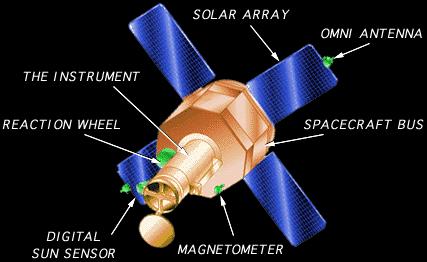We recently came across a remarkable video about bearing failure due to electrical damage. But here's the twist: These were reaction wheel bearings, and they failed in space.
The Kepler space telescope, the Far Ultraviolet Spectroscopic Explorer (FUSE), Dawn, and Hayabusa: Each of these space probes suffered reaction wheel bearing failures, leading to problems with changing the probe's orientation (or attitude). In space, as on earth, having the right attitude is essential to success. If you spend millions of dollars to launch a probe to study Jupiter, you'll want to be sure the probe is pointing at Jupiter!

On the other hand, reaction wheels work almost like a child's Sit 'n Spin: An electric motor is fixed to the craft, and its shaft is attached to the wheel. When the motor puts a torque on the wheel, the wheel exerts an equal and opposite torque on the motor. The torque on the relatively small wheel accelerates it quickly; the opposite torque on the motor (and the rest of the probe) makes it rotate in the opposite direction, but slowly, so fine adjustments can be made to the position. When reaction wheels fail, the craft may be forced to use some of its limited amount of propellant to maintain the proper orientation.
One reaction wheel bearing manufacturer, whose RWA line was used in Kepler and FUSE, performed a relentless root cause analysis and found that these bearing failures all occurred while or just after the Sun was in the midst of violent activity. After painstaking analysis and testing, they proposed that these failures were caused by electrical arcing through the reaction wheel bearings. The huge amounts of radiation released during these solar storms were creating a voltage difference across the bearings, and when that voltage discharged, bearing damage and sometimes failure occurred. The researchers' paper summarizing their findings can be found here.
The RWA manufacturer inadvertently solved the problem of electrical damage before this research was completed, by using ceramic bearings, instead of steel, in their reaction wheels. Because ceramic has such a high electrical resistance, the voltage on the craft is unable to discharge through the bearings.
Although this happened literally millions of miles from the nearest variable frequency drive, this is exactly like the electrical bearing damage that VFDs cause. Both phenomena share the same critical element: a voltage difference across motor bearings. With motors on VFDs, the drive's pulsed output creates a voltage across the bearings (usually called simply a shaft voltage). Regardless of how the voltage gets there, the result is the same: Discharge through the bearing, destruction of the bearing's smooth surface, and eventual failure.
While ceramic bearings are one way to address the problem of bearing discharge, they are one of the more expensive solutions. An equally effective solution is the AEGIS® Shaft Grounding Ring - a ring of conductive microfibers surrounding the motor shaft and electrically connected to the motor frame. Shaft grounding rings have lower electrical resistance than motor bearings. So rather than shaft voltage building up high enough to discharge through the bearings, current flows along the path of least resistance: through the AEGIS ring, instead of through the bearings.
In larger motors, additional sources of bearing currents may be present, so one ceramic or insulated bearing may be necessary, along with an AEGIS ring.
AEGIS Rings also come with a 2-year extended warranty against bearing fluting damage. No other form of protection against VFD-caused bearing damage offers a warranty like this.

To learn more about AEGIS shaft grounding and best practices for electrical bearing protection, sign up for a training. We offer monthly live training webinars, and we can also visit your facility to review your exact application.


